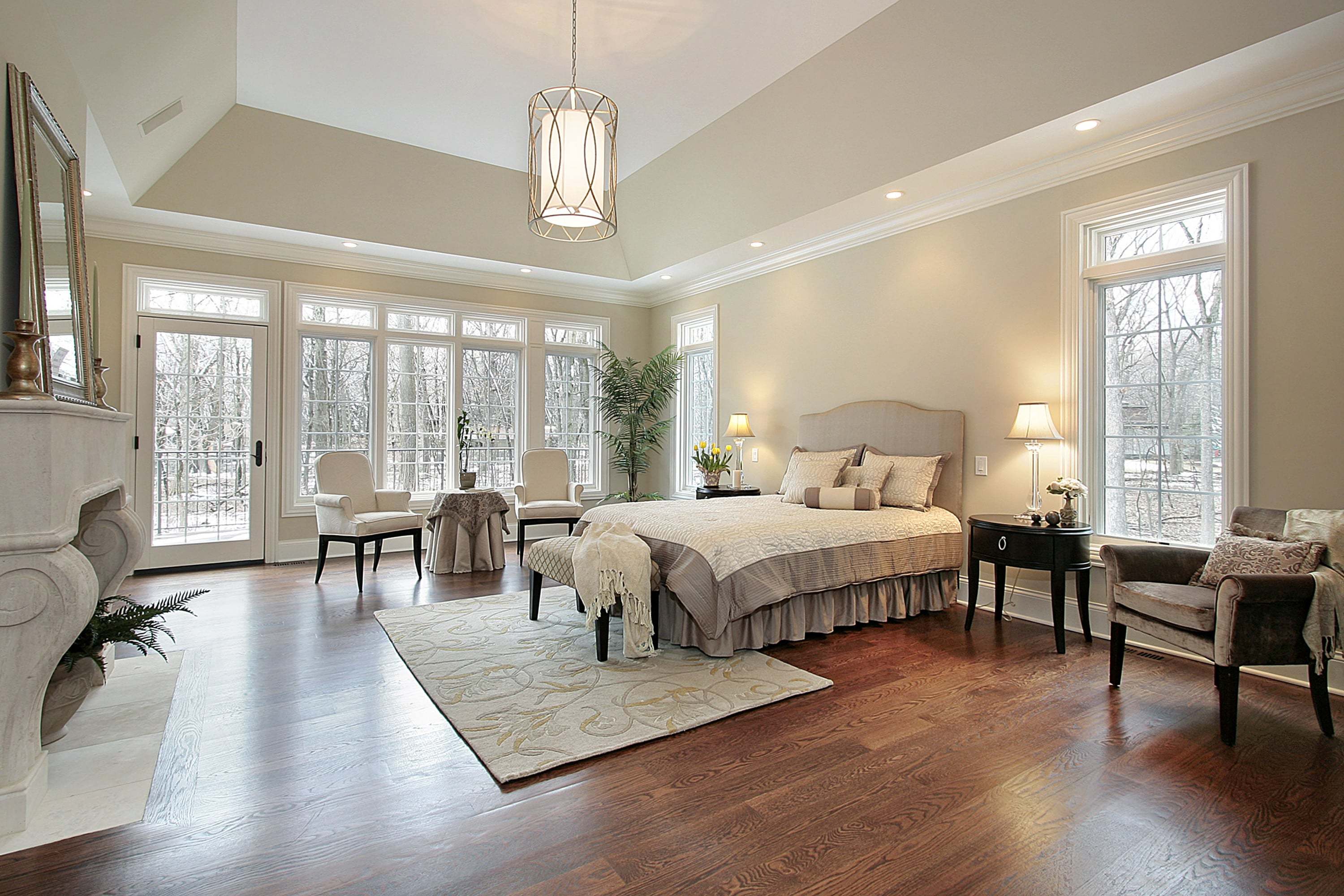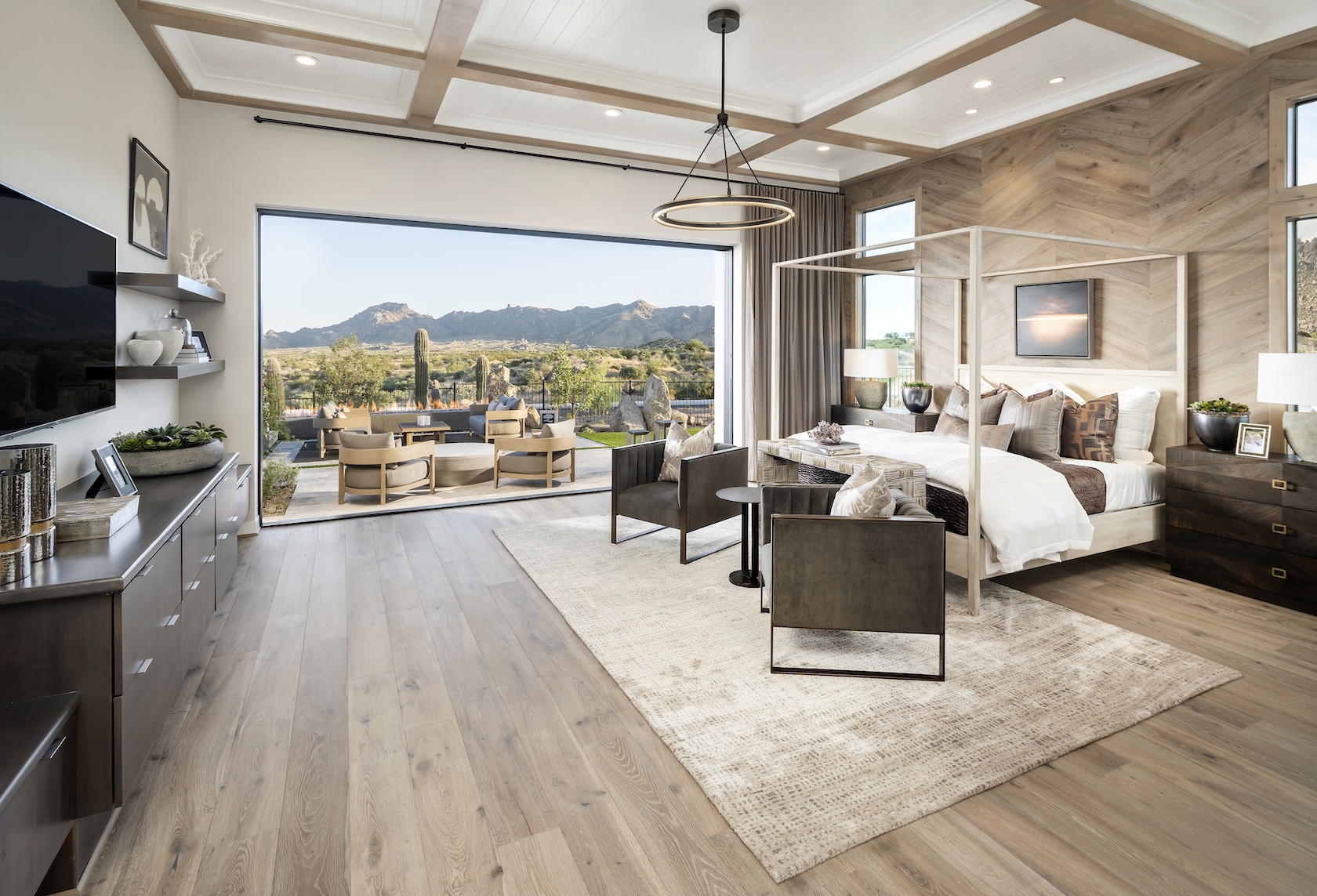Understanding the Master Bedroom

The master bedroom, once a simple space for sleep, has evolved into a sanctuary of comfort and luxury. It represents the pinnacle of domesticity, a place for relaxation, rejuvenation, and personal expression. The concept of the master bedroom has undergone a dramatic transformation, reflecting changing societal values and architectural trends.
The Evolution of the Master Bedroom
The master bedroom’s evolution is a fascinating tale of changing priorities and design sensibilities. In the past, bedrooms were often modest spaces, primarily designed for sleep and storage. As lifestyles shifted and homes became more spacious, the master bedroom gradually evolved into a more expansive and luxurious retreat. This transformation was driven by factors such as increased disposable income, a growing emphasis on personal comfort, and the rise of the “home spa” concept.
Features and Amenities
The modern master bedroom is often characterized by a suite of features and amenities designed to enhance comfort and privacy. These include:
- Walk-in closets: Providing ample space for clothing, accessories, and shoes, walk-in closets offer a dedicated area for organization and personal style.
- Ensuite bathrooms: A private bathroom attached to the master bedroom offers a luxurious experience, complete with features like soaking tubs, walk-in showers, and dual vanities.
- Private balconies or patios: Extending the living space outdoors, balconies or patios provide a serene escape for enjoying fresh air, morning coffee, or evening relaxation.
- Fireplaces: Adding a touch of warmth and ambiance, fireplaces create a cozy and inviting atmosphere within the master bedroom.
- Home offices: With the rise of remote work, master bedrooms are increasingly incorporating dedicated home office spaces, blurring the lines between work and leisure.
Design Trends Across Architectural Styles
The design of master bedrooms varies significantly across different architectural styles and eras, reflecting the aesthetic sensibilities of each period.
Traditional Master Bedrooms
Traditional master bedrooms often feature classic design elements such as:
- Formal furniture: Heavy, ornate furniture pieces with intricate carvings and upholstery create a sense of grandeur and elegance.
- Rich color palettes: Deep, saturated hues like burgundy, navy, and emerald green are often used to create a sophisticated and timeless atmosphere.
- Patterned fabrics: Floral prints, damask patterns, and brocade fabrics add texture and visual interest to the space.
- Architectural details: Crown molding, wainscoting, and decorative fireplaces enhance the architectural character of the room.
Modern Master Bedrooms
Modern master bedrooms embrace clean lines, minimalist aesthetics, and a focus on functionality. Key features include:
- Sleek furniture: Simple, geometric furniture with smooth lines and minimal embellishments creates a streamlined look.
- Neutral color palettes: White, gray, and black are often used as base colors, creating a sense of calm and spaciousness.
- Natural materials: Wood, stone, and leather are favored for their natural beauty and durability.
- Open floor plans: Modern master bedrooms often feature open floor plans that seamlessly integrate the bedroom, bathroom, and closet.
Contemporary Master Bedrooms
Contemporary master bedrooms blend modern elements with a touch of eclecticism and artistic expression. Key features include:
- Bold colors and patterns: Vibrant colors, geometric patterns, and unexpected textures add visual interest and personality to the space.
- Statement pieces: Unique artwork, sculptures, or furniture pieces create a focal point and define the room’s character.
- Sustainable materials: Recycled materials, eco-friendly fabrics, and energy-efficient appliances are increasingly incorporated into contemporary master bedrooms.
- Smart home technology: Integration of smart home devices such as voice assistants, automated lighting, and temperature control enhances comfort and convenience.
Factors Influencing Master Bedroom Design: Houses With Master Bedroom

The design of a master bedroom is a reflection of personal preferences, lifestyle choices, and external factors. It’s a space where individuals seek comfort, privacy, and a sense of tranquility, making it essential to consider various aspects that influence its design.
Personal Preferences and Lifestyle Choices
A master bedroom’s design is heavily influenced by the individual’s taste and lifestyle. The number of occupants, desired level of privacy, and preferred aesthetic all play a significant role.
- Number of Occupants: For couples, the design might prioritize shared space, while a single occupant may prefer a more personalized and minimalist approach.
- Desired Level of Privacy: Some individuals seek complete seclusion, opting for soundproof walls and blackout curtains. Others may prefer a more open and airy design.
- Preferred Aesthetic: Design choices can range from contemporary minimalism to classic elegance, reflecting individual tastes and creating a unique atmosphere.
Climate and Location
Climate and location significantly impact a master bedroom’s functionality and design.
- Climate: In hot climates, ventilation and cooling systems are crucial. Large windows and light-colored walls can help reflect heat, while in colder regions, insulation and heating systems are paramount.
- Location: The orientation of the bedroom, particularly in relation to sunlight, can influence the design. East-facing bedrooms receive morning sunlight, while west-facing bedrooms receive afternoon sun.
Budget
Budget constraints are a significant factor in master bedroom design.
- Material Choices: Luxury materials like hardwood floors and custom cabinetry can be expensive, while more budget-friendly options like laminate flooring and prefabricated furniture can still achieve a stylish and functional space.
- Design Complexity: Simple designs with minimal customization are generally more affordable than complex designs with intricate details and custom features.
Technology, Houses with master bedroom
Technology has revolutionized the way we live, and the master bedroom is no exception. Smart home features and entertainment systems enhance comfort and convenience.
- Smart Home Features: Automated lighting, temperature control, and security systems provide convenience and enhance the overall experience.
- Entertainment Systems: Home theaters, sound systems, and smart TVs create immersive entertainment experiences within the comfort of the bedroom.
Master Bedroom Design Ideas

The master bedroom, often considered a sanctuary within the home, deserves careful attention to detail. Creating a space that promotes relaxation, rejuvenation, and a sense of tranquility is paramount. This section delves into various design ideas, innovative storage solutions, and the importance of lighting in shaping the master bedroom’s atmosphere.
Master Bedroom Design Themes
Exploring different design themes can inspire unique and personalized master bedroom aesthetics. Each theme offers a distinct character, incorporating specific elements, color palettes, and materials to create a cohesive and inviting space.
| Theme | Key Features | Color Palette |
|---|---|---|
| Minimalist | Clean lines, simplicity, functionality, neutral colors, natural materials, minimal decor | White, gray, black, beige, muted tones |
| Bohemian | Eclectic mix of patterns, textures, colors, global influences, handcrafted items, natural elements | Rich jewel tones, earthy browns, vibrant accents, metallics |
| Farmhouse | Rustic charm, natural materials, distressed finishes, warm tones, vintage accents | Creams, whites, browns, blues, greens |
| Industrial | Exposed brick, metal accents, reclaimed wood, dark tones, vintage lighting | Grays, blacks, browns, metallics, pops of color |
Innovative Storage Solutions
Master bedrooms often face the challenge of limited space and clutter. Addressing this challenge requires creative and practical storage solutions that maximize space and maintain a clutter-free environment.
“Storage solutions are the key to creating a functional and visually appealing master bedroom.”
- Built-in wardrobes and closets: Maximizing vertical space with custom-designed storage solutions that integrate seamlessly with the bedroom’s design. These can include drawers, shelves, hanging rods, and even hidden compartments for maximizing storage efficiency.
- Floating shelves: Creating a visually light and airy feel while providing additional storage space for books, decorative items, and personal belongings.
- Under-bed storage: Utilizing the space beneath the bed with drawers, lift-up platforms, or storage bins for seasonal items, bedding, or other belongings.
- Storage ottomans and benches: Combining functionality and style with ottomans and benches that double as storage compartments for blankets, pillows, or other items.
- Wall-mounted organizers: Optimizing wall space with shelves, hooks, and organizers for hanging clothes, accessories, and other items, freeing up floor space.
Lighting for a Relaxing Atmosphere
Lighting plays a crucial role in shaping the atmosphere of the master bedroom. Selecting the right types of lighting fixtures and strategically placing them can enhance the ambiance, create a sense of relaxation, and provide functional illumination for various activities.
“The right lighting can transform a master bedroom into a haven of peace and tranquility.”
- Ambient lighting: Providing overall illumination with ceiling fixtures or lamps, creating a soft and inviting atmosphere for relaxation and sleep. Consider using dimmable lights to adjust the brightness level as needed.
- Task lighting: Focusing light on specific areas for activities like reading, getting ready in the morning, or working from home. Desk lamps, bedside lamps, and wall sconces can provide focused illumination.
- Accent lighting: Highlighting specific features or artwork with strategically placed spotlights or wall sconces, adding depth and dimension to the bedroom’s design. Consider using warm-toned light bulbs to create a cozy and inviting atmosphere.
